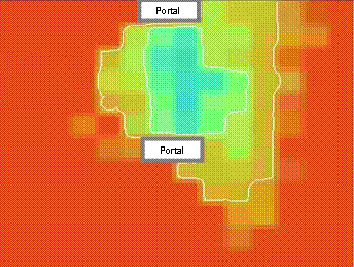Apr 12, 2004Reston, Va.-based systems integrator ODIN Technologies announced at the RFID Journal LIVE! conference in Chicago that it has developed an offering that bundles ODIN's tag and tag-placement testing service, called Trifecta (see ODIN Upgrades Its Tag-Testing Tool) with its site-assessment and newly developed reader-optimization services.
Named the RFID Compliance Certification Service, the new bundled offering is designed to enable a company that is mandated to use passive UHF RFID tags in the retail or government supply chain to certify that its deployment meets the required read range and read rate specified in its contract or mandate. It also ensures that the company is using the most appropriate tags and tag placements and an optimized reader network. Once the testing and optimization processes are complete, ODIN provides the company with certification in the form of documentation that details the key metrics surrounding the readability of its case and pallet tags. Such documentation would be useful if the supplier needs to prove to its customers that it is meeting any mandated tagging requirements for products that have been shipped.
Bret Kinsella, ODIN's vice president of operations and marketing, says ODIN can provide the certification service to any company running a UHF RFID deployment, regardless of whether that company is using ODIN Technologies or another firm as a systems integrator. He says one early adopter of RFID that was dissatisfied with the read results it was getting through its main system integrator has already used the ODIN certification service. The service offering includes a site assessment, during which any RF interference resulting from the end users facility is identified and, if possible, eliminated.
The reader-optimization tool uses RF-imaging devices to map out the signal strength of an RFID reader's antennas. To do the interrogation-zone mapping, ODIN selects a roughly 10-square-foot-area between antennas in a portal or on a conveyor belt (though other reader configurations could be optimized as well) and tapes a grid of foot-long squares on the floor. A tag is then attached to a piece of cardboard mounted vertically (to simulate a tagged case) on a tripod. ODIN moves the tripod from square to square, and in each one, the company takes an RF signal reading. These readings are combined to form an image showing the reader's interrogation zone.
"The image you get is similar to those you get from heat-zone mapping that shows the heat variation in a human body," says ODIN's director of professional services, Chris Fennig. It shows gradients of color, ranging from red (indicating no signal) to yellow (indicating a weak signal strength) to green (indicating a stronger signal) and blue (showing where the signal is strongest).
Based on the signal readings it gets, ODIN adjusts the reader settings and the antennas' physical orientation so that the antennas produce an interrogation zone that is appropriate for the tagging system they are being used for. To function most appropriately, the reader's power level might need to be reduced to contain the RF radiation it produces.
"You can't just blast the antennas at maximum power, because that can oversaturate the tags," says Kevin MacDonald, ODIN's vice president of client architecture.
Also, by mapping and defining the interrogation zone that each reader produces, ODIN provides a company with a clear understanding of which tags are being read by which readers. If an interrogation zone is too large, it might pick up a tag on a case that is not on the conveyor and is not being shipped. The interrogation-zone mapping process also allows ODIN to measure the read range of the tags when the end user is tagging cases.
The RFID Compliance Certification Service is now available to ODIN's current customers. The company plans to make the software tool that will enable others to perform the characterization themselves available in late summer or early fall. No pricing information is available.


